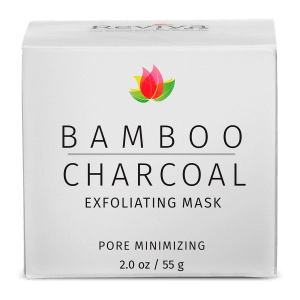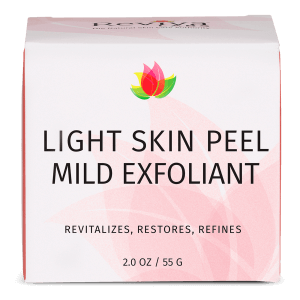Ingredients, Reviva Labs, Skin Care
A Few Things to Know Before Using a Peeling Solution
Peeling solutions can be a powerful tool in your skincare arsenal. They offer a range of benefits from exfoliation to improved texture and tone. However, before incorporating these products into your routine, it’s important to understand a few key points to ensure that you have a safe and effective experience.
Using a peeling product can help address a variety of skin concerns, including dullness, acne, fine lines, and uneven skin tone. Before adding a peeling solution to your skincare routine, it’s important to recognize the type of peeling agent that’s used in your product. Typically, peeling solutions are formulated with various types of alpha hydroxy acids (AHAs), beta hydroxy acids (BHAs) or enzymes that exfoliate the top layer of the skin. AHAs are water-soluble and work on the skin’s surface, while BHAs are oil-soluble, and penetrate deeper to unclog pores. Enzymatic peels, on the other hand, use fruit enzymes for a gentler exfoliation. Knowing which type you’re using will help you understand its effects on your skin and how to incorporate it into your routine.
Popular Peeling Ingredients
Some of the most popular ingredients used in peeling products include glycolic acid, lactic acid, and salicylic acid. Each of these has their unique properties and benefits. For example, glycolic acid is known for its ability to penetrate deeply and effectively exfoliate, while lactic acid is milder and more hydrating, making it suitable for dry or sensitive skin types. Both are very effective AHAs. Salicylic acid, on the other hand, is a BHA and oil soluble. It’s particularly effective in targeting acne-prone skin by unclogging pores. Familiarizing yourself with these ingredients will help you choose a product that aligns with your specific skin concerns.
Skin type and sensitivity play a significant role in how your skin will react to a peeling solution. Those with dry or sensitive skin may find high concentrations of acids too harsh, leading to redness, irritation, or even peeling. It’s always a good idea to start with a lower concentration and gradually increase as your skin builds tolerance. For oily or acne-prone skin, BHAs might be more beneficial due to their ability to penetrate and clean out pores. Listening to your skin and adjusting accordingly is paramount for avoiding adverse reactions and ensuring a positive outcome.
Before using any new peeling product, conducting a patch test is highly recommended. Prior to applying your new product to your entire face, spread a small amount to a discreet area of your skin, like behind the ear or on the inner arm, and wait 24 hours to check for any adverse reactions. This simple precaution can prevent widespread irritation or allergic reactions, making it a critical step for anyone, especially those with sensitive skin or allergies.
How Often Should You Peel?
Timing and frequency are also critical factors to consider when using peeling solutions. Introducing a peeling product into your skincare routine shouldn’t be done hastily. Begin by using the product once a week, observing how your skin responds, and then slowly increasing the frequency as tolerated. It’s also important to apply these products in the evening, as they can make your skin more sensitive to sunlight. Following up with a broad-spectrum sunscreen during the day is non-negotiable to protect your newly exfoliated skin from harmful UV rays.
Lastly, it’s important to be patient and consistent with your use of peeling solutions. Results may not be immediate, and it can take several weeks or even months to see significant improvements in skin texture, tone, and overall appearance. Consistency is key, as is maintaining a balanced skincare routine that includes gentle cleansing, moisturizing, and sun protection alongside your peeling treatment.
Incorporating a peeling solution into your skincare routine can be a game-changer, offering a range of benefits from smoother, more radiant skin to improved texture and tone. By understanding your skin type, choosing the right ingredients, using the product appropriately, protecting your skin from the sun, and being patient with the process, you can achieve optimal results and enjoy a healthier, more youthful-looking complexion.












